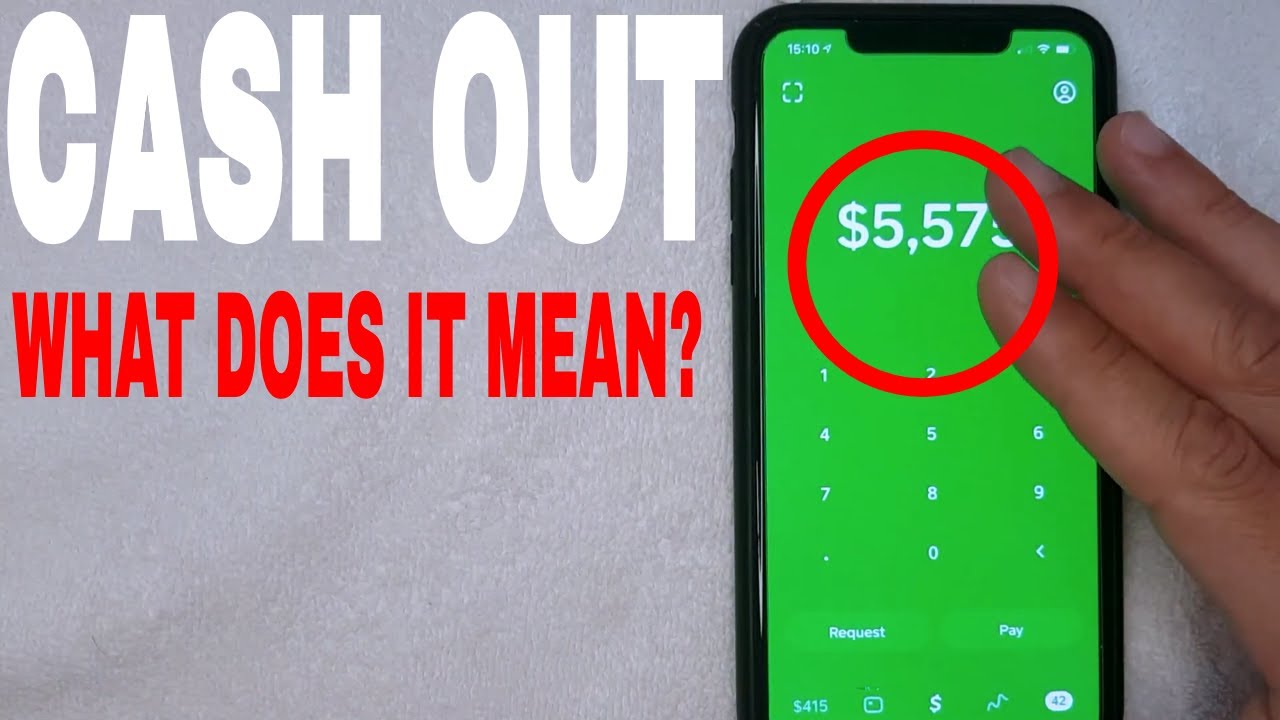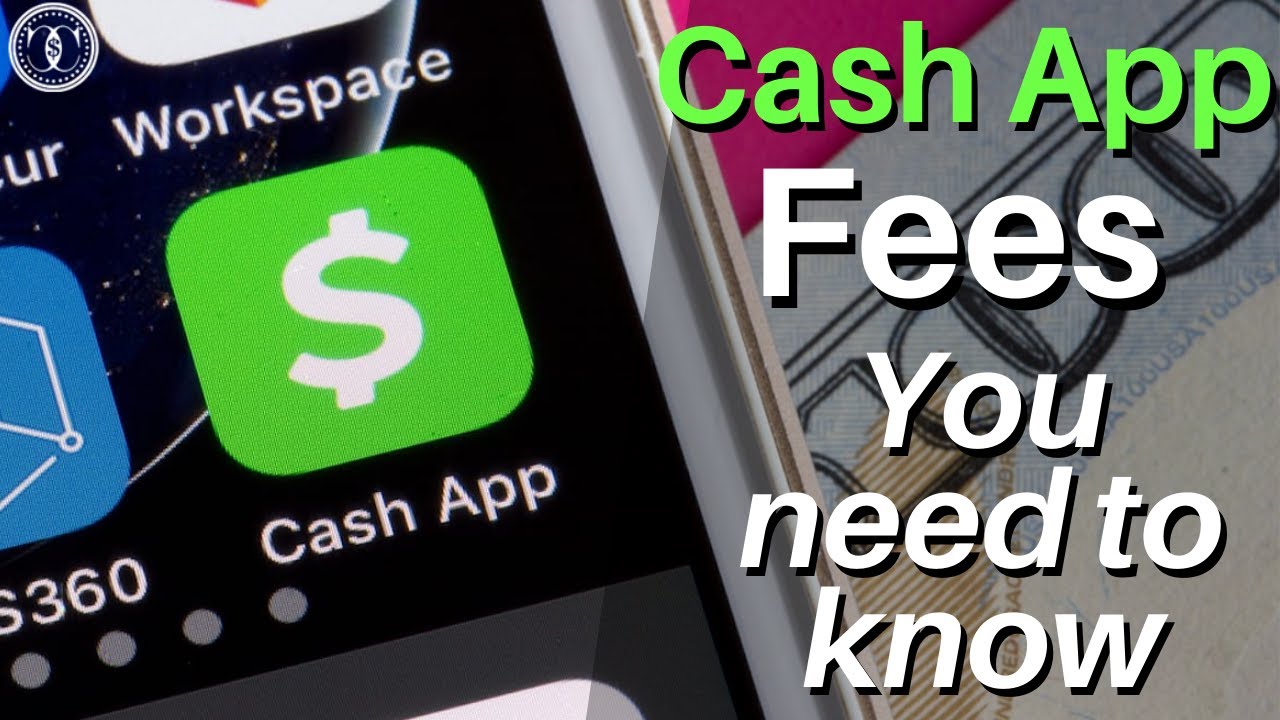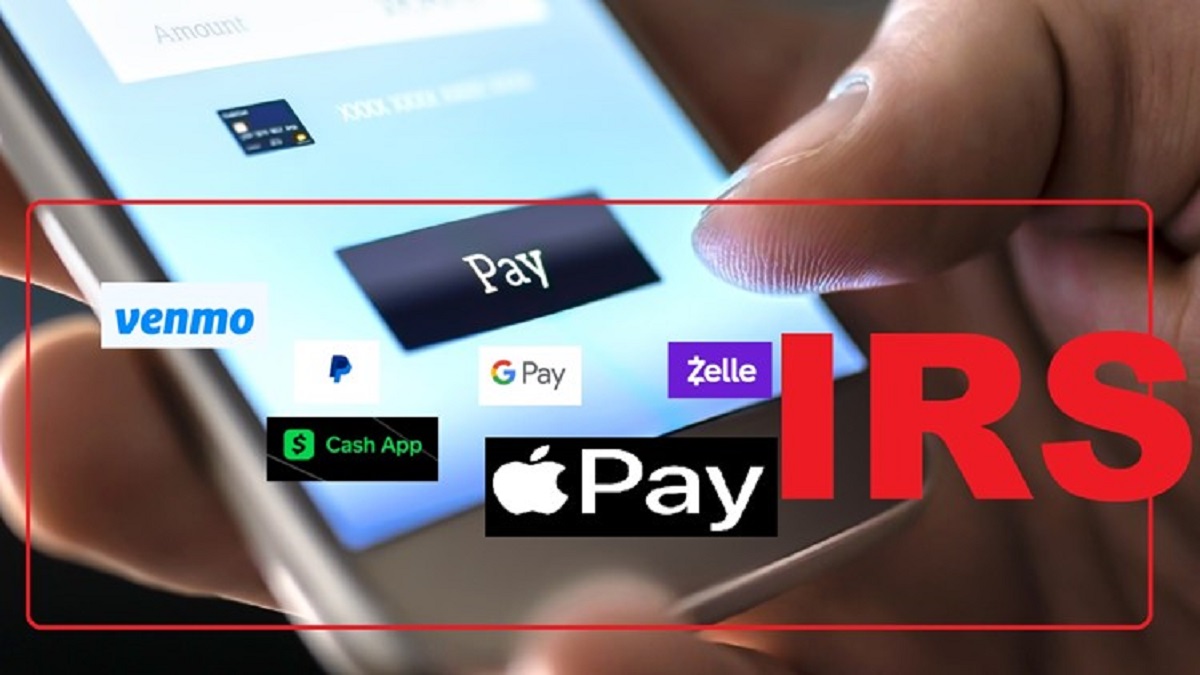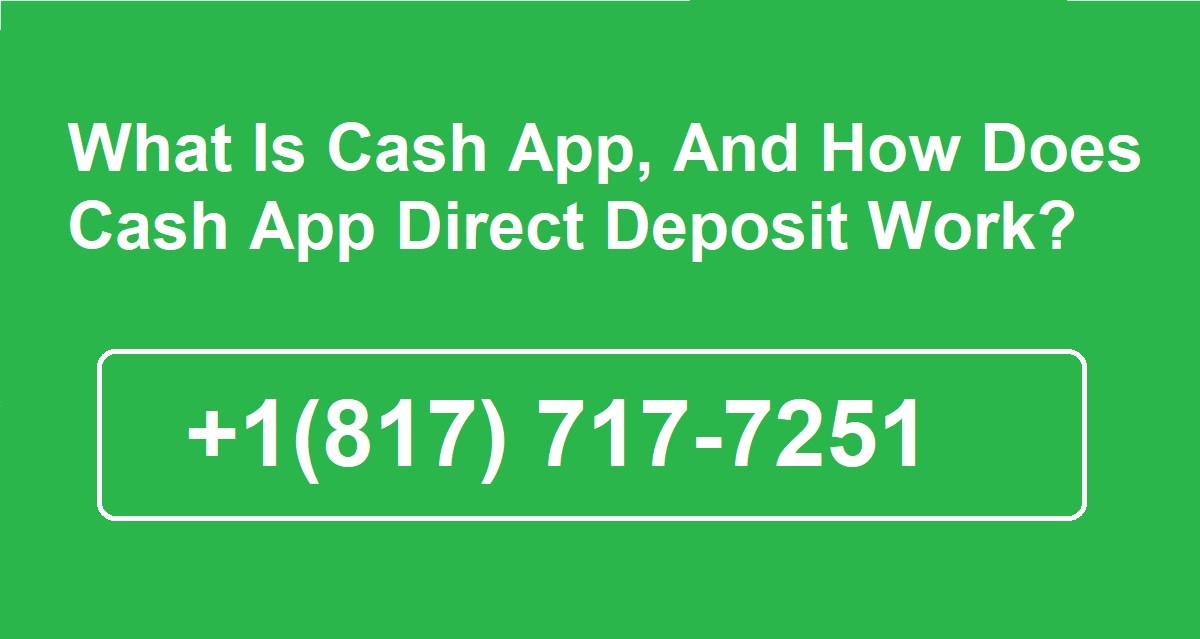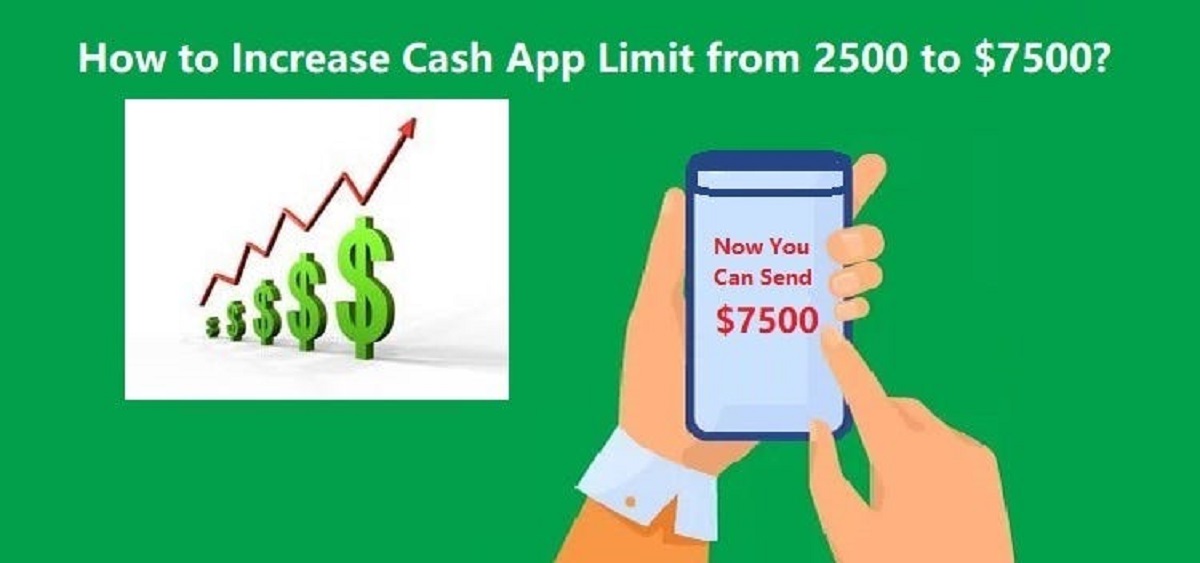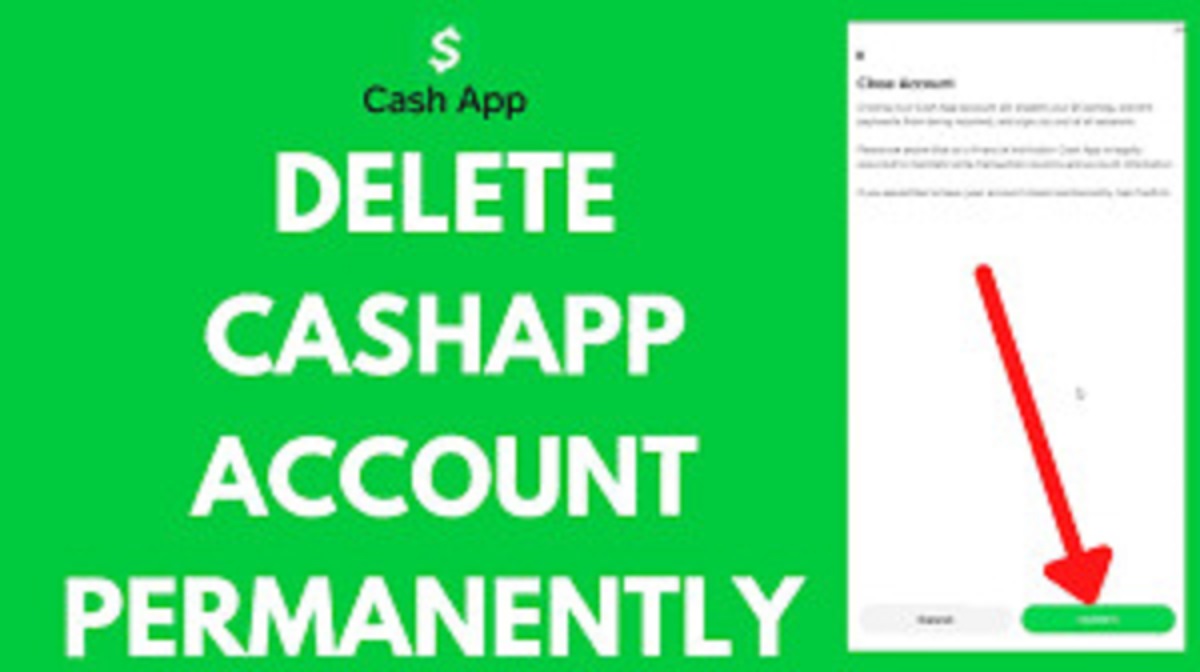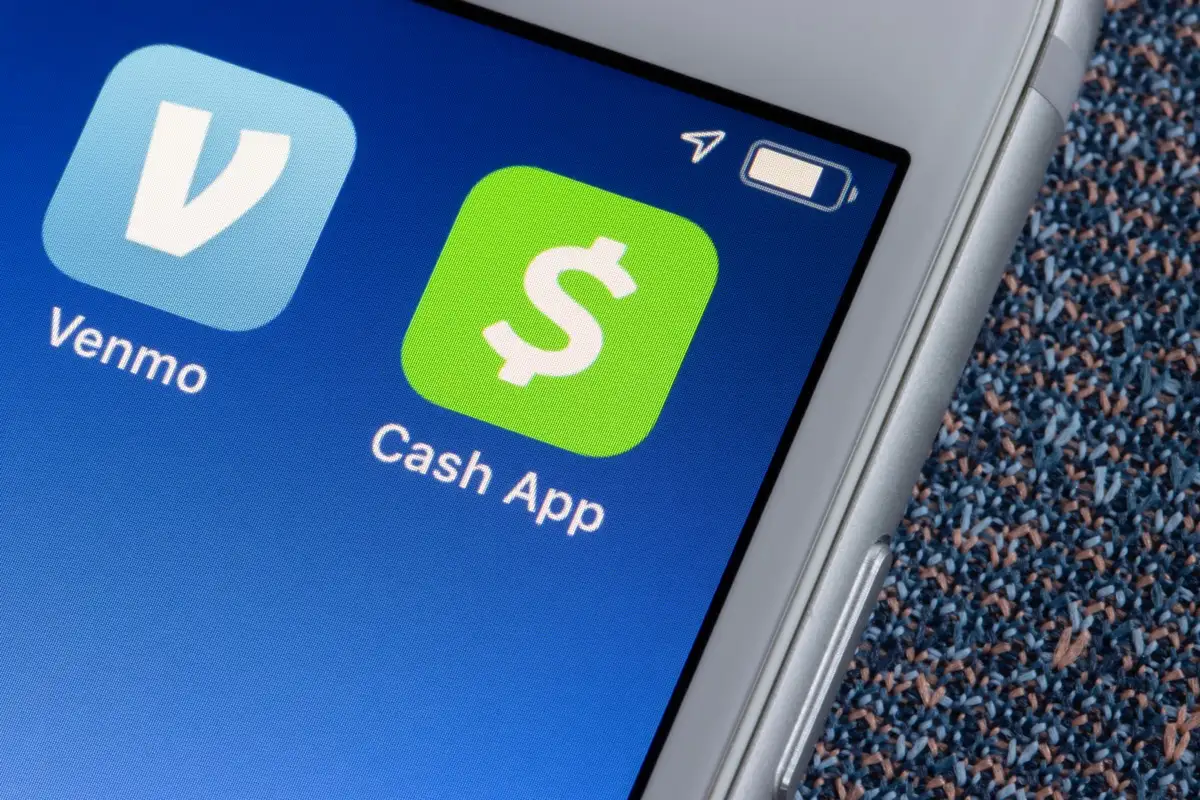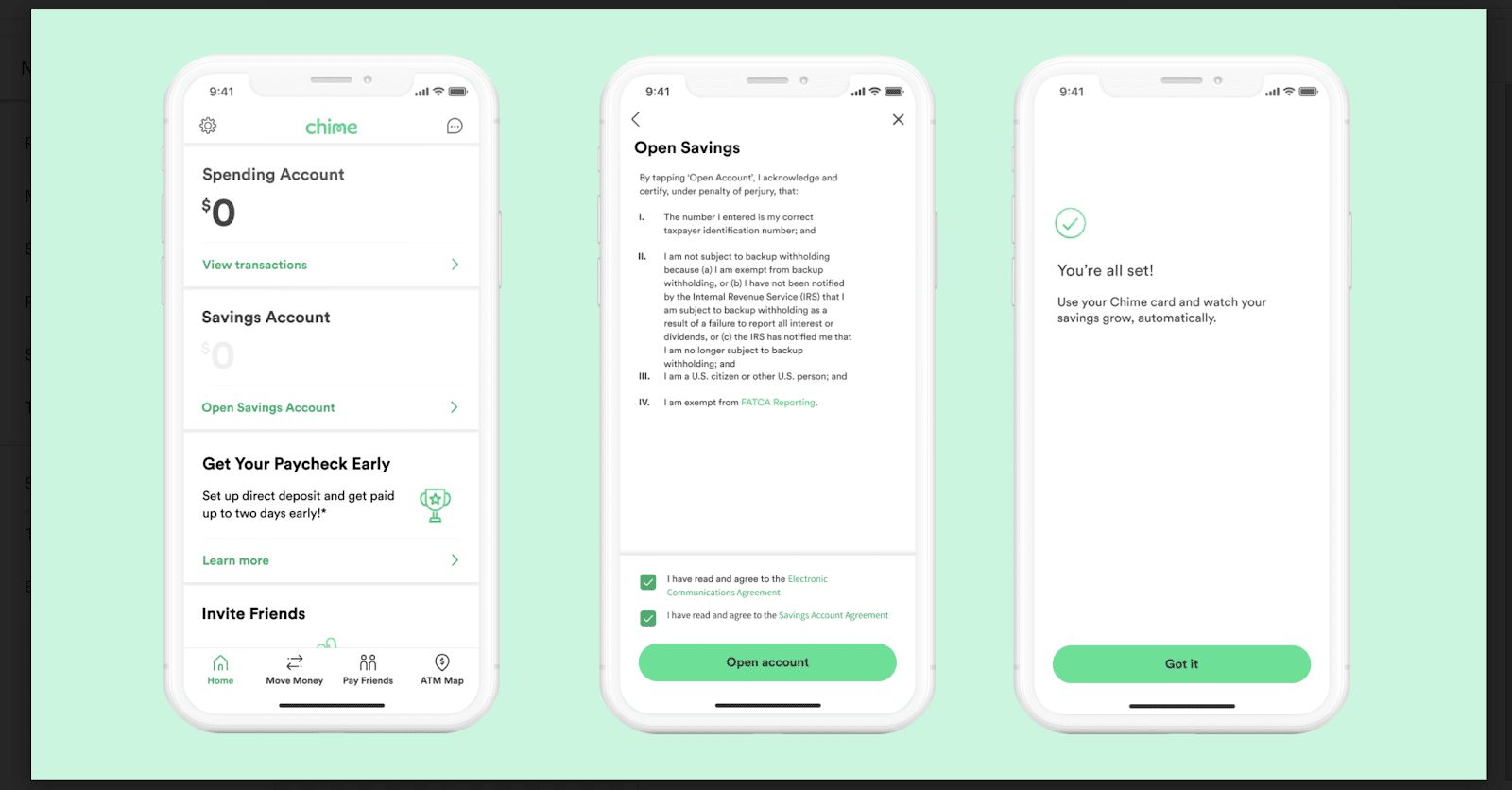Introduction
Welcome to the world of Cash App! If you’re new to the app or curious about its features, you might have come across the term “cash out.” In this article, we’ll delve into the meaning of “cash out” on Cash App and explain everything you need to know about this functionality.
Cash App is a popular mobile payment service that allows users to send, receive, and request money from friends, family, or even businesses. It provides a convenient way to handle transactions, manage finances, and make payments using a smartphone.
One of the key features of Cash App is the ability to “cash out.” This term refers to the process of transferring your available funds from the app to your bank account or obtaining physical cash through other means. Whether you want to withdraw money to cover expenses or simply need some extra cash, cashing out on Cash App provides flexibility and convenience.
In this article, we’ll explore the basics of cashing out on Cash App, including the different options available, any associated fees, and the limits you need to be aware of. We’ll also touch upon the security measures put in place by Cash App to ensure the safety of your transactions.
So, if you’re ready to learn all about cashing out on Cash App, let’s dive in and discover the ins and outs of this handy feature.
What is Cash App?
Cash App is a popular mobile payment service developed by Square Inc. With over 30 million active users, it has become a convenient and widely-used platform for managing personal finances and making quick payments.
With Cash App, users can easily send, receive, and request money from friends, family, or even businesses. It offers a user-friendly interface and seamless integration with your mobile device, making transactions effortless and hassle-free.
One of the standout features of Cash App is that it allows users to hold funds in their account, similar to a digital wallet. This means you can keep money in your Cash App account and use it for various purposes, such as making online purchases, sending money to others, or cashing out to your bank account.
Beyond its primary function as a payment app, Cash App also provides other features to enhance the user experience. For instance, users can invest in stocks or bitcoin directly through the app, enabling them to grow their wealth and explore different investment opportunities.
Cash App is available for both iOS and Android devices and can be downloaded for free from the respective app stores. Setting up an account is quick and easy, requiring only a few simple steps to link your bank account or debit card.
Overall, Cash App offers a convenient and secure platform for managing your finances and making transactions with ease. With its user-friendly interface, wide acceptance, and additional features like investing, it’s no wonder that Cash App has gained such popularity among users. So, whether you need to send money to a friend, pay for goods and services, or cash out your funds, Cash App is a versatile and reliable option.
The Basics of Cash Out on Cash App
When it comes to cashing out on Cash App, there are a few fundamental aspects to understand. Let’s explore the basics of how to initiate a cash out and the options available to you.
First and foremost, it’s important to note that in order to cash out on Cash App, you need to have available funds in your account. This means that you should either receive money from another Cash App user or add funds to your account through a linked bank account or debit card.
Once you have funds available in your Cash App account, you can initiate a cash out by following these simple steps:
- Launch the Cash App on your mobile device
- Tap on your account balance, located at the top of the home screen
- Select “Cash Out”
- Enter the amount you wish to cash out
- Choose your desired cash out method
- Confirm the transaction details and complete the cash out process
Now that you know how to cash out on Cash App, let’s explore the different options available to you:
1. Standard Deposit: This is the default cash out method on Cash App. When you choose this option, the funds will be transferred to your linked bank account within 1-3 business days. However, it’s worth noting that banks may have their own processing times, so it may take slightly longer for the funds to appear in your account.
2. Instant Deposit: If you need your cash instantly, Cash App offers an instant deposit option for a small fee. With instant deposit, the funds will be transferred to your linked debit card instantly, allowing you quick access to your money. Keep in mind that there is a fee associated with this option, which is clearly outlined during the cash out process.
3. Cash App Card: Another option for cashing out on Cash App is by using the Cash App Card. This is a physical debit card that you can order from the app and link to your Cash App account. Once you receive the card, you can use it to withdraw cash from ATMs or make purchases at any merchant that accepts Visa.
These are the primary cash out options available on Cash App. Whether you prefer the standard deposit for its convenience or need instant access to your funds through the instant deposit or Cash App Card, Cash App provides flexibility to cater to your specific needs.
How to Cash Out on Cash App
Cashing out on Cash App is a straightforward process that allows you to transfer your available funds to your bank account or obtain physical cash through other methods. Here’s a step-by-step guide on how to cash out on Cash App:
- Launch the Cash App on your mobile device.
- Tap on your account balance, which is located at the top of the home screen.
- Select the “Cash Out” option.
- Enter the amount you wish to cash out. You can enter a specific amount or choose from the available options.
- Choose your desired cash out method. You have the option to select either the Standard Deposit, Instant Deposit, or Cash App Card.
- Review the transaction details, including any associated fees, and confirm the cash out.
- Follow any additional instructions provided by Cash App, such as verifying your identity if necessary.
Once you have completed these steps, Cash App will begin processing your cash out request. The processing time will vary depending on the cash out option you selected:
Standard Deposit: If you opted for the standard deposit, the funds will be transferred to your linked bank account within 1-3 business days. Keep in mind that processing times may vary depending on your bank, so it’s important to check with them for specific details.
Instant Deposit: If you chose the instant deposit option, the funds will be transferred to your linked debit card instantly. However, please note that there is a small fee associated with this option, which will be clearly outlined during the cash out process.
Cash App Card: If you have a Cash App Card, you can use it to withdraw cash from ATMs or make purchases at any merchant that accepts Visa. Simply follow the instructions provided to activate and use your Cash App Card for cash withdrawals.
It’s worth mentioning that Cash App may require you to verify your identity before being able to cash out. This is a security measure implemented to protect your account and ensure the legitimacy of your transactions. Should you be prompted to verify your identity, simply follow the provided instructions to complete the process.
Now that you know how to cash out on Cash App, you can easily access your funds and use them as needed. Whether you choose the standard deposit for convenience, the instant deposit for immediate access, or the Cash App Card for physical cash, Cash App offers flexibility to cater to your cash out preferences.
Cash Out Options on Cash App
Cash App provides users with several cash out options to suit their preferences and needs. Let’s explore the different options available to cash out on Cash App:
1. Standard Deposit: This is the default cash out option on Cash App. When you choose the standard deposit, your funds will be transferred to your linked bank account within 1-3 business days. This option is convenient if you don’t need immediate access to your money and are comfortable with the standard processing time.
2. Instant Deposit: If you require instant access to your cash, Cash App offers an instant deposit option for a small fee. With instant deposit, your funds will be transferred to your linked debit card instantly, allowing you to access your money immediately. Keep in mind that there is a fee associated with this option, which is clearly outlined during the cash out process.
3. Cash App Card: Another option for cashing out on Cash App is using the Cash App Card. This is a physical debit card that you can order from the app and link to your Cash App account. Once you receive the card, you can use it to withdraw cash from ATMs or make purchases at any merchant that accepts Visa. It provides a convenient way to access your funds in physical form.
4. Bitcoin: While not a traditional cash out option, Cash App also allows you to convert your available funds into Bitcoin. If you’re interested in cryptocurrency and want to invest your money in Bitcoin, you can transfer your funds into Bitcoin and hold it as an investment. However, it’s important to note that the value of Bitcoin can be highly volatile, so ensure you understand the risks involved before opting for this option.
These cash out options offer flexibility for Cash App users to choose the method that best suits their needs. Whether you prefer the standard deposit for its convenience, the instant deposit for immediate access, the Cash App Card for physical cash, or even converting your funds into Bitcoin, Cash App provides a range of options to cater to individual preferences.
Remember to review any associated fees and processing times before selecting your preferred cash out option. By having a clear understanding of your options, you can make informed decisions about how to cash out your funds on Cash App.
Cash Out Fees on Cash App
When cashing out on Cash App, it’s important to be aware of any fees that may be associated with the different cash out options. Let’s explore the fees that you may encounter when using Cash App:
1. Standard Deposit: The standard deposit option on Cash App is the most cost-effective choice as it does not involve any additional fees. When you select the standard deposit, your funds will be transferred to your linked bank account within 1-3 business days, and Cash App does not charge any fees for this process.
2. Instant Deposit: If you need immediate access to your funds, Cash App offers the instant deposit option for a small fee. When you choose this option, your money will be transferred instantly to your linked debit card. However, please note that a fee of 1.5% of the total cash out amount will be deducted from the transfer.
3. Cash App Card: The Cash App Card offers a convenient way to access your funds in physical cash or make purchases. However, it’s important to note that using the Cash App Card for ATM withdrawals may incur fees imposed by the ATM operator. These fees vary depending on the ATM location and are not charged by Cash App itself.
It’s essential to review and consider these fees when selecting your cash out option on Cash App. While the standard deposit carries no additional fees, the instant deposit and Cash App Card options involve fees that will be deducted from your cash out amount. Make sure to evaluate your needs and weigh the convenience versus the associated fees before making your decision.
Cash App provides transparency by clearly outlining the fees during the cash out process. Before confirming your cash out, you will be shown the exact fee amount associated with the particular option you have chosen. This ensures that you have a clear understanding of the fees involved before completing the transaction.
By being aware of the cash out fees on Cash App, you can make informed decisions that align with your financial goals and preferences. Whether you prioritize speed, convenience, or minimizing costs, understanding the fees will help you choose the most suitable cash out option that suits your needs.
Cash App to Bank Account Transfer
Cash App allows users to transfer their funds from the app directly to their linked bank accounts. This feature provides a convenient and secure way to access your funds and use them for various financial needs. Let’s explore how the Cash App to bank account transfer works:
When you initiate a cash out on Cash App and select the “Standard Deposit” option, your funds will be transferred to your linked bank account within 1-3 business days. This transfer is done electronically, ensuring a safe and efficient process. It’s important to note that the processing time may vary depending on your bank’s policies, so it’s always a good idea to check with your bank for specific details.
To set up a bank account on Cash App, you need to follow these simple steps:
- Open the Cash App on your mobile device.
- Tap on the profile icon located at the top left corner of the home screen.
- Select “Banking” from the menu options.
- Tap on “Add a Bank” and follow the on-screen prompts to enter your bank account information.
- Once your bank account is linked, you can easily transfer funds from Cash App to your bank account.
When transferring funds from Cash App to your linked bank account, it’s important to ensure that you have sufficient available funds in your Cash App account to cover the transfer amount. The transfer will be initiated once you confirm the transaction, and the funds will be reflected in your bank account balance within the specified processing time.
By linking your bank account to Cash App, you can seamlessly manage your finances and easily transfer funds between the two accounts as needed. This feature provides flexibility and convenience, allowing you to access your funds through your bank account or directly on the Cash App platform, depending on your financial requirements.
It is worth noting that you can link multiple bank accounts to your Cash App, giving you the flexibility to choose the desired account for the transfer. This is particularly useful if you have multiple bank accounts and want to allocate funds accordingly.
Overall, the Cash App to bank account transfer provides an efficient and secure way to access your funds and use them for your financial needs. By linking your bank account and understanding the transfer process, you can easily manage and utilize your funds conveniently through Cash App.
Cash App Card for Cash Outs
In addition to transferring funds to your bank account, Cash App offers another cash out option through the use of the Cash App Card. This physical debit card allows you to access your Cash App funds in the form of physical cash or make purchases at any merchant that accepts Visa. Let’s explore how the Cash App Card can be used for cash outs:
The Cash App Card functions like any other debit card, allowing you to withdraw cash from ATMs or make purchases both online and at physical stores. To obtain a Cash App Card, you can order one directly from the app and link it to your Cash App account.
Once you receive your Cash App Card, you can activate it by following the provided instructions. After activation, you can start using the Cash App Card to withdraw cash or make purchases. To do so, simply swipe the card or insert it into an ATM or payment terminal, just like you would with any other debit card.
When it comes to cashing out with the Cash App Card, you have the flexibility to withdraw physical cash from any ATM that accepts Visa. Keep in mind that some ATM operators may charge additional fees for using their machines. These fees are not imposed by Cash App and vary depending on the specific ATM location.
The Cash App Card also allows you to make purchases at any merchant that accepts Visa. This means you can use your Cash App funds to pay for goods and services, effectively cashing out by using your account balance for transactions.
By utilizing the Cash App Card for cash outs, you can have the convenience of accessing your funds in physical form and use them wherever Visa is accepted. It offers flexibility and ease of use, allowing you to have quick access to your Cash App funds without the need for a bank account transfer.
It’s important to note that the Cash App Card is linked directly to your Cash App account, so any cash outs or purchases made using the card will be deducted from your available account balance. You can also manage your Card settings, view transaction history, and receive notifications through the Cash App mobile application.
The Cash App Card provides an additional cash out option for Cash App users, allowing them to easily access their funds in physical cash or use them for purchases. Its versatility and convenience make it a valuable tool for managing your Cash App account balance outside of the digital realm.
Cash Out Limits on Cash App
While using Cash App, it’s important to be aware of the cash out limits that may apply to your account. These limits dictate the maximum amount you can cash out in a given period. Let’s explore the cash out limits on Cash App:
The cash out limits on Cash App can vary depending on various factors such as your account verification status, transaction history, and overall activity. Cash App employs these limits as a security measure to prevent unauthorized access and to ensure the safety of your funds.
For unverified Cash App accounts, there are certain limits in place that restrict the amount of money you can send and receive. These limits generally apply to both incoming and outgoing transactions, including cash outs. Unverified accounts typically have a lower cash out limit compared to verified accounts.
If you want to increase your cash out limits on Cash App, it is recommended to complete the verification process. This involves providing additional personal information, such as your full name, date of birth, and the last four digits of your Social Security Number (SSN). By verifying your account, you can potentially raise your limits and enjoy expanded functionality on Cash App.
Cash App provides a level of flexibility when it comes to customizing your cash out limits. Once your account is verified, you have the option to adjust your cash out limits within certain predefined boundaries. This means you can increase or decrease the limits based on your individual needs and preferences.
It’s important to note that even though you can customize your cash out limits within certain parameters, there are still overall maximum limits enforced by Cash App. These limits are put in place to ensure the security and integrity of the platform.
To view and manage your cash out limits on Cash App, you can follow these steps:
- Open the Cash App on your mobile device.
- Tap on the profile icon located at the top left corner of the home screen.
- Select “Cash Support” from the menu options.
- Choose “Something Else” from the available categories.
- Select “Cash Out Limits.”
- Review your current cash out limits and make any necessary adjustments if allowed.
By understanding and managing your cash out limits on Cash App, you can ensure that your transactions are in line with your needs and adhere to the platform’s guidelines. Whether you need to increase your limits by verifying your account or customize the limits within the predefined boundaries, Cash App aims to provide a secure and flexible cash out experience for its users.
Cash Out Security on Cash App
When it comes to cashing out on Cash App, security is a top priority. Cash App employs various measures to ensure the safety and integrity of your transactions, providing users with peace of mind when accessing and transferring their funds. Let’s explore the cash out security features on Cash App:
1. Account Verification: Cash App encourages users to complete the verification process to enhance security. By verifying your account, you provide additional personal information, which helps protect against unauthorized access and potential fraudulent activity. Verifying your account can also help increase your cash out limits, providing an added layer of security for larger transactions.
2. Two-Factor Authentication: Cash App offers an optional feature called two-factor authentication (2FA). When enabled, this adds an extra layer of security by requiring an additional verification step, such as entering a unique code sent to your registered phone number or email, before accessing your account or completing a transaction.
3. Security Alerts: Cash App provides security alerts to notify users of any suspicious or unauthorized activity associated with their account. These alerts can help you identify potential threats and take appropriate action to secure your funds.
4. Face ID and Touch ID: Cash App offers support for biometric authentication such as Face ID and Touch ID on compatible devices. This added security feature ensures that only authorized individuals can access and use the Cash App on their mobile device.
5. Encryption and Data Protection: Cash App employs industry-standard encryption technology to protect your personal and financial information. This encryption ensures that your data remains secure during transmission and storage, minimizing the risk of unauthorized access or data breaches.
6. Dispute Resolution: In the event of fraudulent or unauthorized transactions, Cash App provides a dispute resolution process. If you identify any suspicious activity or encounter unauthorized charges, you can report the issue to Cash App customer support, who will investigate the matter and take appropriate action to resolve the dispute.
These security measures, along with ongoing monitoring and analysis of transactions, help safeguard your funds and personal information on Cash App. However, it’s essential to remain vigilant and adopt best practices to protect your account, such as using strong, unique passwords, keeping your device(s) secure, and regularly reviewing your account activity for any discrepancies.
By implementing robust security measures and providing users with tools to protect their accounts, Cash App ensures the integrity and safety of cash outs and other transactions. These security features work in tandem to create a secure cash out environment, giving users the confidence to manage their funds on the platform.
Conclusion
Cash App is a versatile and user-friendly mobile payment service that offers convenient options for cashing out your funds. Whether you need to transfer money to your bank account, access physical cash with the Cash App Card, or make purchases with your Cash App funds, Cash App provides flexibility to cater to your specific needs.
In this article, we have explored the meaning of “cash out” on Cash App and covered the basics of how to initiate a cash out. We have discussed the different cash out options available, including the standard deposit, instant deposit, and using the Cash App Card. Additionally, we have mentioned the cash out limits that may apply to your account and the security measures in place to protect your transactions.
It is important to note that Cash App continues to innovate and introduce new features. Therefore, it’s a good practice to stay updated with the latest developments in the app to make the most of its functionality.
Whether you’re sending money to family and friends, paying for goods and services, or simply cashing out your funds, Cash App provides a convenient and reliable platform to manage your finances. The ability to easily access your funds and complete transactions with ease makes Cash App a preferred choice for millions of users.
Remember to always review the fees associated with each cash out option and understand your cash out limits. By doing so, you can make informed decisions and optimize your experience on the Cash App platform.
So, whether you’re a seasoned Cash App user or new to the app, you now have a solid understanding of what “cash out” means on Cash App and how to utilize this feature. Enjoy the convenience and flexibility that Cash App offers as you manage your finances and make transactions with ease.







